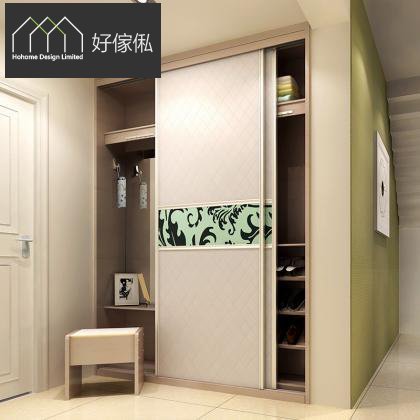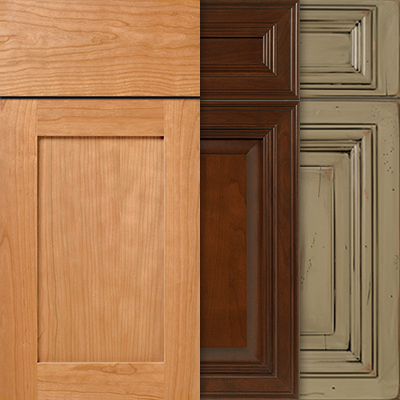All Categories
Featured
In home style, door positioning often takes a rear seat to larger architectural choices, yet it plays a crucial duty fit how a home works and really feels. Proper door positioning makes sure that rooms are reliable, aesthetically pleasing, and for a comfy lifestyle. Right here's an extensive check out the scientific research behind door positioning and why it should have more interest in the design procedure.
Doors are the portals that link one room to one more, and their placement should promote smooth activity throughout the home.
Secret Factors To Consider:
Logical Pathways: Placement doors to line up with natural traffic patterns. A kitchen area door should supply straight accessibility to the eating location to streamline daily routines.
Minimizing Challenges: Prevent positioning doors where furniture or structural components might obstruct their swing or develop bottlenecks.
Transitions: Usage doorways to note transitions in between public and personal areas, such as hallways resulting in bedrooms.
The positioning of doors can substantially impact exactly how light and air circulate within a home, adding to its total ambiance and power efficiency.
Positioning Strategies:
Cross-Ventilation: Area doors opposite windows or other openings to advertise airflow, particularly in cozy environments.
Sunshine Optimization: Take into consideration the orientation of outside doors to catch morning or afternoon light, brightening insides naturally.
Glass Doors: Use doors with glass inserts to enable light to filter via, boosting illumination in surrounding spaces.
Calculated door positioning is vital for preserving personal privacy in key areas without endangering ease of access.
Finest Practices:
Bedrooms and Bathrooms: Setting these doors far from high-traffic areas like living spaces or kitchen areas to produce a sense of retreat.
Guest Locations: For homes with visitor collections, doors need to offer both very easy accessibility and personal privacy for visitors.
Key Entrance: The front door ought to use straight accessibility to common areas without disclosing too much of the home's interior.
Beyond functionality, doors play a considerable role in the visual coherence of a room. Their placement and layout need to enhance the home's aesthetic charm.
Style Tips:
Symmetry and Balance: Line up doors symmetrically in common spaces like hallways to develop a sense of order.
Prime Focus: Use grand access doors or special designs as visual highlights.
Uniformity: Suit door styles and finishes throughout the home for a natural look.
Door positioning can affect a home's power effectiveness by controling warm circulation and insulation.
![]()
Energy-Saving Approaches:
Insulated Doors: Use well-insulated outside doors to decrease energy loss.
Wind Defense: Setting main doors away from dominating wind directions or utilize vestibules to reduce drafts.
Zoning: Usage doors to section off areas of the home for targeted home heating or cooling.
![]()
In lots of societies, the positioning of doors carries symbolic significance and can influence how a home is regarded.
Examples:
Feng Shui: In this custom, the front door's positioning affects the circulation of "chi" or power, with guidelines stressing visibility and balance.
![]()
Directional Placement: In Vastu Shastra, an ancient Indian layout ideology, door orientation is thought to influence prosperity and consistency.
Entrance Statements: Grand entryways or intricately made doors can signal warmth and friendliness.
Last Ideas
Door positioning is both a scientific research and an art. Thoughtful placing ensures that homes are not only functional yet likewise harmonious and welcoming. By thinking about spatial circulation, all-natural light, personal privacy, and cultural elements, home owners and designers can create spaces that feel intuitive and well balanced. When prepared properly, doors become greater than simply entry factors; they shape the entire living experience.
- Enhancing Spatial Flow
Doors are the portals that link one room to one more, and their placement should promote smooth activity throughout the home.
Secret Factors To Consider:
Logical Pathways: Placement doors to line up with natural traffic patterns. A kitchen area door should supply straight accessibility to the eating location to streamline daily routines.
Minimizing Challenges: Prevent positioning doors where furniture or structural components might obstruct their swing or develop bottlenecks.
Transitions: Usage doorways to note transitions in between public and personal areas, such as hallways resulting in bedrooms.
- Making Best Use Of All-natural Light and Ventilation
The positioning of doors can substantially impact exactly how light and air circulate within a home, adding to its total ambiance and power efficiency.
Positioning Strategies:
Cross-Ventilation: Area doors opposite windows or other openings to advertise airflow, particularly in cozy environments.
Sunshine Optimization: Take into consideration the orientation of outside doors to catch morning or afternoon light, brightening insides naturally.
Glass Doors: Use doors with glass inserts to enable light to filter via, boosting illumination in surrounding spaces.
- Stabilizing Privacy and Access
Calculated door positioning is vital for preserving personal privacy in key areas without endangering ease of access.
Finest Practices:
Bedrooms and Bathrooms: Setting these doors far from high-traffic areas like living spaces or kitchen areas to produce a sense of retreat.
Guest Locations: For homes with visitor collections, doors need to offer both very easy accessibility and personal privacy for visitors.
Key Entrance: The front door ought to use straight accessibility to common areas without disclosing too much of the home's interior.
- Visual Combination
Beyond functionality, doors play a considerable role in the visual coherence of a room. Their placement and layout need to enhance the home's aesthetic charm.
Style Tips:
Symmetry and Balance: Line up doors symmetrically in common spaces like hallways to develop a sense of order.
Prime Focus: Use grand access doors or special designs as visual highlights.
Uniformity: Suit door styles and finishes throughout the home for a natural look.
- Energy Effectiveness Factors To Consider
Door positioning can affect a home's power effectiveness by controling warm circulation and insulation.

Energy-Saving Approaches:
Insulated Doors: Use well-insulated outside doors to decrease energy loss.
Wind Defense: Setting main doors away from dominating wind directions or utilize vestibules to reduce drafts.
Zoning: Usage doors to section off areas of the home for targeted home heating or cooling.

- Social and Symbolic Influences
In lots of societies, the positioning of doors carries symbolic significance and can influence how a home is regarded.
Examples:
Feng Shui: In this custom, the front door's positioning affects the circulation of "chi" or power, with guidelines stressing visibility and balance.

Directional Placement: In Vastu Shastra, an ancient Indian layout ideology, door orientation is thought to influence prosperity and consistency.
Entrance Statements: Grand entryways or intricately made doors can signal warmth and friendliness.
Last Ideas
Door positioning is both a scientific research and an art. Thoughtful placing ensures that homes are not only functional yet likewise harmonious and welcoming. By thinking about spatial circulation, all-natural light, personal privacy, and cultural elements, home owners and designers can create spaces that feel intuitive and well balanced. When prepared properly, doors become greater than simply entry factors; they shape the entire living experience.
Latest Posts
When to Tell When Your Car Needs Professional Vehicle Service at Montclare Auto Repair
Published May 27, 25
1 min read
Explore WyHy FCU – Top Benefits for Your Money Goals
Published May 26, 25
1 min read
Trustworthy Business Roof Services by Weathercraft
Published May 25, 25
1 min read
More
Latest Posts
When to Tell When Your Car Needs Professional Vehicle Service at Montclare Auto Repair
Published May 27, 25
1 min read
Explore WyHy FCU – Top Benefits for Your Money Goals
Published May 26, 25
1 min read
Trustworthy Business Roof Services by Weathercraft
Published May 25, 25
1 min read